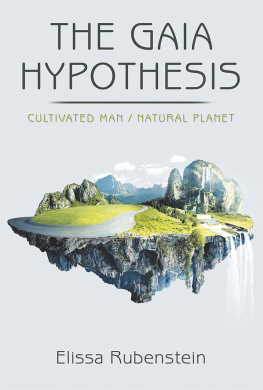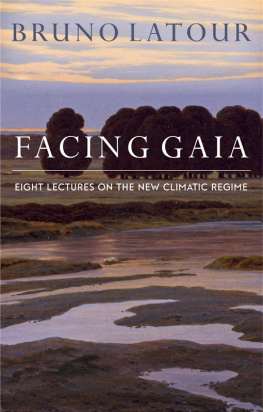PENGUIN BOOKS
THE REVENGE OF GAIA
If we had our way this would be on the reading syllabus GQ
The most profound scientific thinker of our time the greatest living Englishman Bryan Appleyard, Literary Review
He has changed the way we look at the world Colin Tudge, Guardian
This book could prove to be one of the twentieth-centurys most important pieces of polemic James Flint, Daily Telegraph
Lovelocks vast learning, crisp and energetic writing, and original thinking mean that every disagreement is a prompt to become better informed and clearer-thinking about climate change John Whitfield, Independent on Sunday
A sharp jolt to political complacency fresh and thought-provoking Andrew Robinson, The Times HigherEducation Supplement
A scientific visionary packed with wisdom and integrity, beautifully written, challenging David King, The Times
The prose has an elegance and clarity that put the standard eco-rant to shame Tom Fort, Spectator
His poetic yet precise, scientific yet spiritual, way of thinking takes us to the heart of what it is to be a human on this strange planet called Earth This is a hugely serious book. You will rarely read anything more serious, more humane, more humbling, more passionate, more scientific, more spiritual, more important Fred Pearce, BBC Focus
One of the most famous scientists on the planet and one of the creators of our current environmental consciousness Ian Irvine, Independent
This brief, urgent and sobering polemic Ned Denny, Evening Standard
The man who conceived the first wholly new way of looking at life on Earth since Charles Darwin Michael McCarthy, Independent
ABOUT THE AUTHOR
James Lovelock is the author of more than 200 scientific papers and the originator of the Gaia Hypothesis (now Gaia Theory). He has written three books on the subject: Gaia: A New Look at Life on Earth, The Ages of Gaia and Gaia: The Practical Science of Planetary Medicine, as well as an autobiography, Homage to Gaia. He has been a Fellow of the Royal Society since 1974. Since 1961 he has worked as a wholly independent scientist but retained links with universities in the UK and USA, and since 1994 has been an Honorary Visiting Fellow of Green College, University of Oxford. He has been described as one of the great thinkers of our time (New Scientist) and one of the environmental movements most influential figures (Observer). In 2003 he was made a Companion of Honour by Her Majesty the Queen, and in September 2005 Prospect magazine named him as one of the worlds top 100 global intellectuals.
JAMES LOVELOCK
The Revenge of Gaia
Why the Earth is Fighting Back and
How We Can Still Save Humanity
Foreword by Sir Crispin Tickell

PENGUIN BOOKS
PENGUIN BOOKS
Published by the Penguin Group
Penguin Books Ltd, 80 Strand, London WC2R 0RL, England
Penguin Group(USA) Inc., 375 Hudson Street, New York, New York 10014, USA
Penguin Group (Canada), 90 Eglinton Avenue East, Suite 700, Toronto, Ontario, Canada M4P 2Y3
(a division of Pearson Penguin Canada Inc.)
Penguin Ireland, 25 St Stephens Green, Dublin 2, Ireland
(a division of Penguin Books Ltd)
Penguin Group (Australia), 250 Camberwell Road, Camberwell, Victoria 3124, Australia
(a division of Pearson Australia Group Pty Ltd)
Penguin Books India Pvt Ltd, 11 Community Centre, Panchsheel Park, New Delhi 110 017, India
Penguin Group (NZ), 67 Apollo Drive, Mairangi Bay, Auckland 1310, New Zealand
(a division of Pearson New Zealand Ltd)
Penguin Books (South Africa) (Pty) Ltd, 24 Sturdee Avenue, Rosebank, Johannesburg 2196, South Africa
Penguin Books Ltd, Registered Offices: 80 Strand, London WC2R 0RL, England
www.penguin.com
First published by Allen Lane 2006
Published in Penguin Books 2007
1
Copyright James Lovelock, 2006
All rights reserved.
The moral right of the author has been asserted
Except in the United States of America, this book is sold subject
to the condition that it shall not, by way of trade or otherwise, be lent,
re-sold, hired out, or otherwise circulated without the publishers
prior consent in any form of binding or cover other than that in
which it is published and without a similar condition including this
condition being imposed on the subsequent purchaser
EISBN: 9780141900810
I dedicate this book to my beloved wife Sandy
List of Illustrations
(Photographic acknowledgements are given in parentheses.)
. Greenlands melting glaciers (Roger Braithwaite/Still Pictures).
. Exit Glacier, Harding Icefields, Alaska (copyright Ashley Cooper/Picimpact/Corbis).
. Peat-bog fires in Dumai, Indonesia (AFP/Getty Images).
. Deforestation in the Amazon, Brazil (Antonio Scorza/AFP/Getty Images).
. Pre-agribusiness English countryside (Royalty-free/ Corbis).
. Intensive farming (copyright Bill Stormont/ Corbis).
. Energy use and urban spread, as seen from space (NASA/Newsmakers).
. Algal life in the oceans (image provided by ORBIMAGE and NASA WiFS Project).
. The scarcity of the Earths vegetation (NASA/ Corbis).
. The surface of Mars (HO/AFP/Getty Images).
. Land devastation by mining (James Lovelock).
. Par Pond, Savannah River nuclear facility, USA (David E. Scott/SREL).
Acknowledgements
I have been fortunate to have friends who read and who made helpful and valued comments on the book as it was written and I am truly grateful to: Richard Betts, David Clemmow, Peter Cox, John Dyson, John Gray, Stephan Harding, Peter and Jane Horton, Tim Lenton, Peter Liss, Chris Rapley, John Ritch, Elaine Steel, Sir Crispin Tickell, David Ward and Dave Wilkinson. I also thank GAIA, registered charity no. 327903, www.daisyworld.org, for support during the writing of this book and to whom all royalties will be donated.
Foreword
Who is Gaia? What is she? The What is the thin spherical shell of land and water between the incandescent interior of the Earth and the upper atmosphere surrounding it. The Who is the interacting tissue of living organisms which over four billion years has come to inhabit it. The combination of the What and the Who, and the way in which each continuously affects the other, has been well named Gaia. It is, as James Lovelock says, a metaphor for the living Earth. The Greek goddess from whom the term is derived should be proud of the use to which her name has been put.
The notion that the Earth is in this metaphorical sense alive has a long history. Gods and goddesses were seen to embody specific elements, ranging from the sky to the most local spring, and the notion that the Earth itself was alive came up regularly in Greek philosophy. Leonardo da Vinci saw the human body as the microcosm of the Earth, and the Earth as the macrocosm of the human body. He did not know as well as we now do that the human body is a macrocosm of the tiny elements of life bacteria, parasites, viruses often at war with each other, and together constituting more than our body cells. Giordano Bruno was burnt at the stake just over 400 years ago for maintaining that the Earth was alive, and that other planets could be so too. The geologist James Hutton saw the Earth as a self-regulating system in 1785, and T. H. Huxley saw it likewise in 1877. For his part, Vladimir Ivanovich Vernadsky saw the functioning of the biosphere as a geological force which creates a dynamic disequilibrium which in turn promotes the diversity of life.
Next page







